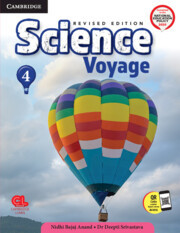
Extinctions
How Life Survives, Adapts and Evolves
-
15% KEDVEZMÉNY?
- A kedvezmény csak az 'Értesítés a kedvenc témákról' hírlevelünk címzettjeinek rendeléseire érvényes.
- Kiadói listaár GBP 25.00
-
12 337 Ft (11 750 Ft + 5% áfa)
Az ár azért becsült, mert a rendelés pillanatában nem lehet pontosan tudni, hogy a beérkezéskor milyen lesz a forint árfolyama az adott termék eredeti devizájához képest. Ha a forint romlana, kissé többet, ha javulna, kissé kevesebbet kell majd fizetnie.
- Kedvezmény(ek) 15% (cc. 1 851 Ft off)
- Kedvezményes ár 10 487 Ft (9 988 Ft + 5% áfa)
Iratkozzon fel most és részesüljön kedvezőbb árainkból!
Feliratkozom
12 337 Ft

Beszerezhetőség
Becsült beszerzési idő: A Prosperónál jelenleg nincsen raktáron, de a kiadónál igen. Beszerzés kb. 3-5 hét..
A Prosperónál jelenleg nincsen raktáron.
Why don't you give exact delivery time?
A beszerzés időigényét az eddigi tapasztalatokra alapozva adjuk meg. Azért becsült, mert a terméket külföldről hozzuk be, így a kiadó kiszolgálásának pillanatnyi gyorsaságától is függ. A megadottnál gyorsabb és lassabb szállítás is elképzelhető, de mindent megteszünk, hogy Ön a lehető leghamarabb jusson hozzá a termékhez.
A termék adatai:
- Kiadó Thames & Hudson
- Megjelenés dátuma 2023. szeptember 7.
- ISBN 9780500025468
- Kötéstípus Keménykötés
- Terjedelem304 oldal
- Súly 640 g
- Nyelv angol
- Illusztrációk 70 illustrations, 28 in colour 571
Kategóriák
Hosszú leírás:
A journey through the great mass-extinction events that have shaped our Earth.
In this vast sweep of our Earths history, Michael Benton brings the deep past to life as never before. Deploying the cutting-edge tools in biology, chemistry, physics and geology that are transforming our understanding of previous environmental cataclysms including the incredible new discovery of a hitherto unknown extinction event he uncovers not only their lethal effects but also the processes that brought about such large-scale destruction.
Beginning with the oldest extinction, Benton investigates the Late Ordovician, which set the evolution of the first animals on an entirely new course; the late Devonian, brought on by global warming; the cataclysmic End-Permian, which wiped out over 90 per cent of all life on Earth; and, book-ending the age of the dinosaurs, the newly discovered Carnian Pluvial Event and the End-Cretaceous asteroid. He examines how global warming, acid rain, ocean acidification, erupting volcanoes and meteorite impact have affected conditions on Earth, the drastic consequences for global ecology, and how life in turn survived, adapted and evolved.
This expert retelling of scientific breakthroughs allows us to link long-ago upheavals to our modern crises. As todays climate scientists and political leaders grapple to understand these processes and our planet enters the sixth great extinction, these insights from the past may hold the key to survival.






